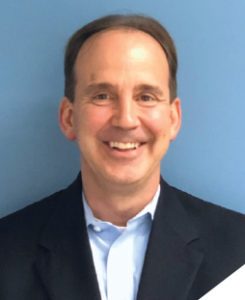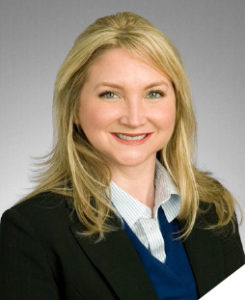This is the seventh installment of our Tax Technology Corner. As a corporate tax professional, you know how important technology is and how it’s evolving at warp speed. With new regulatory and compliance initiatives in the federal, state, and international areas, landmark tax reform legislation, and globalization of tax monitoring and enforcement, keeping up with tax technology is not a luxury—it’s a necessity. Each installment of this column will pair a taxpayer with a service provider. Together, in Q&A format, they’ll tell a story about how they have worked together to solve a specific tax problem, implement a better solution, cut costs, or improve productivity. In this installment, Shawn Carter, global indirect tax director at Baker Hughes, and Stephane Lunan, a partner at Deloitte Tax LLP in tax technology, discuss how they could work together to capitalize on the burgeoning use of new technology tools, such as bots, to move Baker Hughes to next level in the tax space. Michael Levin-Epstein, senior editor of Tax Executive, moderated the discussion.
Michael Levin-Epstein: Shawn, why don’t you give a description of Baker Hughes?

Shawn Carter: Baker Hughes is a global energy technology company that delivers value through four product companies: our oil-field services, oil-field equipment, turbo machinery/process solutions, [and] digital solutions. We employ around 67,000 people and operate in over 120 countries. We incorporate the latest in leading technology, such as 3D printing and artificial intelligence, to deliver customer value in our product and service offerings. One of Baker’s continued focus areas is improving upon the next wave of digital processes, efficiency through digital capability and artificial intelligence.
Levin-Epstein: Stephane?
Stephane Lunan: Deloitte Tax is a global professional services company. We serve clients, providing them a range of fully integrated tax services, combining insights and innovation with both business and industry knowledge to serve our clients. At Deloitte, we are leading clients through the tax transformation taking place in the marketplace [by] helping clients transform to a digital tax platform, developing innovative future-forward tax departments embodied by strategic planning and compliance, and serving as enterprise partners within their organization.
Levin-Epstein: Shawn, what was the impetus behind your seeking assistance from Deloitte?
Carter: In getting to our technology challenge, I think it might be helpful if I provide a bit of background about our global indirect tax function and our recent technology journey. One of our internal tax goals has always been to evaluate indirect tax data on a near-real-time basis and improve indirect tax processes by using the latest technology, including bots and data analytic tools. Our leadership teams have always been very good about encouraging and giving us the flexibility to be creative and try new things. Our global internal indirect tax teams process around 27,000 returns annually. We manage hundreds of audits, and we oversee, manage, and address risk impacts in a constantly changing global environment. In the past two years, we’ve built bots that can move efficiently across multiple ERP systems, pulling information for projects, audits, reviews, and compliance. We initially focused in the U.S., then scaled globally, and plan on scaling across functions soon. We’ve saved thousands of hours, and the savings continue to build. Then, in the past year, we’ve also developed workflows to test and review transactions in the GL and tax engine. We’re able to process millions of transactions through a series of encapsulated workflows, reviewing data, applying rules, and developing insights in ways we’ve never been able to before. In less than six months, we’ve generated over one million dollars in hard savings. We’re in the process of scaling across other legal entities in the U.S. and around the world. So, based on these successes, we’ve been challenged to accelerate the use of these tools across a rapidly expanding, digitized environment in an organized manner, ensuring that we are maximizing the overall return with the right amount of governance and controls. We’ve captured the low-hanging fruit, but we wanted to continue to raise our vision to lead for the long term. And so that’s where we looked to Deloitte for help.
Levin-Epstein: Stephane, what was it about your organization that you thought you could help Baker Hughes?

Lunan: Our role in supporting Baker Hughes is to provide leading tax technology practices, supporting their journey of implementing advanced automation solutions such as bots as well as thinking of future IT evolutions such as cloud and next-gen technology solutions that will be life events that can transform the indirect tax process. The reality, as Shawn discussed, is that the Baker Hughes global indirect tax team is already ahead of the game by building a vision and implementing automation solutions that achieve real-time metrics and analytics to help them identify and address anomalies in the indirect tax process that are creating errors. By implementing data-wrangling tools and bots, they have proactively addressed issues that historically you would catch under audit, but instead of waiting, which could result in assessments, fines, and penalties, Shawn and the Baker Hughes team are addressing this head-on so that these issues don’t become future audit issues. As we collaborate further, we are looking to build and expand the inventory of short-term automation of indirect tax processes using data-wrangling tools, bots, VAT-specific technology solutions, and even cognitive/AI tools to gain immediate efficiencies. These are the quick wins, because data-wrangling tools and bots can be developed within the tax department at a low cost and with limited training. In fact, it helps tax become more self-service leveraging these tools. Longer term, due to the changing landscape of technology, we see companies moving to next-generation cloud-based ERPs, business process applications, and tax software, which have a significant impact [on] tax. These technology implementations create an opportunity to leverage these life events to transform the processes of global indirect tax today. The next stage in the journey is to gather the short-term automation and long-term technology life events and to build a road map, vision, and strategy to address the tsunami of change, but also the true tax transformation and ROI that could benefit both the tax organization and the corporate business partners within the organization.
Half-Day Leading Practices Sessions
Carter: In solving our challenge, we held half-day “leading practices” sessions with some great companies, both in industry and public accounting. In these sessions, we discovered, reviewed, and discussed the latest trends in the digital space. We shared lessons learned and overall best practices. We certainly liked what we saw with the Deloitte technology group, both from a service perspective and from their technology capability and product portfolio. And when sitting down with Deloitte’s team members, they shared some of their success stories so that we could see what is actually possible as our potential next steps. We next held some brainstorming sessions and created an efficient country review process, incorporating two of Deloitte’s existing technologies and data-wrangling tools to create a framework to capture, remediate, and take advantage of any opportunities that existed. And finally, we came up with a plan to begin introducing some AI capability within the U.S. around indirect tax.
The AI Factor
Levin-Epstein: I want to follow up on that, when you just said AI. It was the second time it has been mentioned, and I think a lot of TEI members are interested in this. Could you describe how AI helps expedite the tax function? Maybe both of you could weigh in on this.
Lunan: Yes, exactly. What we are seeing, and what we’ve developed within Deloitte, is an AI cognitive tax tool to support indirect tax recoveries, compliance, and audits. Historically companies
and tax authorities would use statistical sampling of an open tax period and simple tools such as spreadsheets and access databases to conduct refunds and audits. Deloitte has developed an AI solution that takes structured data from the ERP as well as the unstructured data and applies algorithms to group and identify potential areas of underpayment, overpayment, and areas of uncertainty. What this accomplishes is twofold: first, the tool learns, so the benefit of it is you can apply all your population of transactions, apply the rules, and get results of potential refunds. Secondly, as you give the tool better data and information, AI tools, like the one Deloitte has developed, not only can generate exact results of refunds and errors, it also supports analysis of the root cause to systemic errors. This provided the opportunity to resolve and fix these errors so they don’t reoccur in the future. So, we see that as being truly transformational. AI can not only be used for indirect tax recovery, but it can be used in any indirect tax process that is rule-based, where learning and getting more precise results can occur, and it stops the errors going forward.
Levin-Epstein: Shawn, do you have anything to add to that?
Carter: No, Stephane did a good job explaining what we’re looking to do.
Two-Way Communication
Levin-Epstein: OK, I’d like you to briefly describe the working relationship that your firms had with each other.
Carter: I can certainly address that issue. We have been very proactive over the years getting involved with different associations such as TEI and through digital spaces like LinkedIn, networking with our peers, and finding out what’s the latest in new technology trends. During that time, we began developing a relationship with Deloitte, and, as we’ve done so, we crafted an idea putting in place what we felt was a win-win situation. So, I think the relationship—Stephane, correct me if I’m wrong—it’s probably been two years or so beginning with meetings, discussions, and brainstorming sessions.
Lunan: Absolutely. I think that’s perfect. I think collaboration is the key. I would add to it that sometimes it doesn’t have to be formal meetings. Oftentimes, I’ll pick up the phone and call Shawn, or Shawn will pick up the phone and call me, and we’ll just talk through some ideas. Part of that is just being able to think through different ideas and talk about particular opportunities that we may never execute on, but it’s great to just be able to sit down and think through and collaborate together, both formally and informally.
Levin-Epstein: Anything to add?
Carter: No, I think I’m good.
Lunan: One of the things that I would just say is my observation is that Baker Hughes has really embraced technology and automation. As each new opportunity for transformation comes, they’re already developing the vision [about] how tax can really transform, enhancing best-in-class technologies and leading practices. I give high kudos to them.



